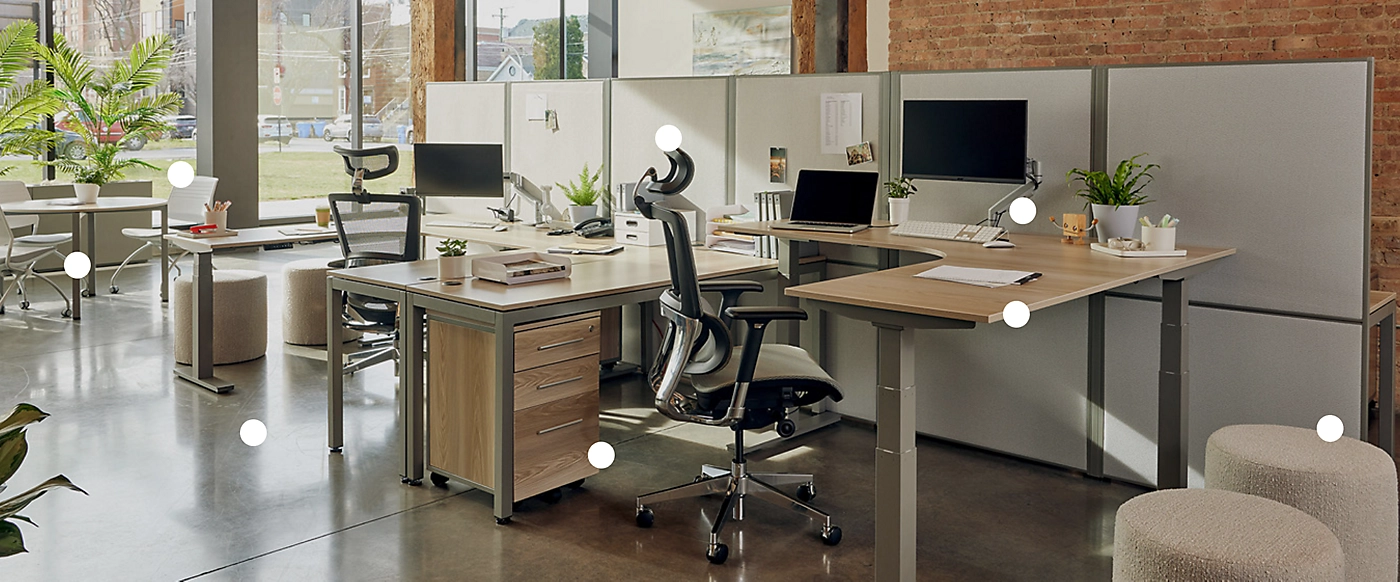In the modern workplace, cubicle workstations have evolved from their traditional, drab configurations to become vibrant hubs of productivity that blend style and functionality. As organizations recognize the importance of creating an engaging work environment, the design of these spaces plays a crucial role in enhancing employee morale, productivity, and collaboration. This article explores the evolution of cubicle workstations, their significance in the workplace, and the innovative design trends shaping their future.
The Evolution of Cubicle Workstations
Originally designed in the mid-20th century to provide employees with personal space while maximizing office density, cubicles were often seen as monotonous and uninspiring. These bland enclosures, characterized by gray partitions and uninspiring furniture, contributed to a sense of isolation among employees. However, as work culture has evolved, so too have cubicle designs.
Today, cubicle workstations are increasingly being reimagined as customizable environments that reflect individual styles and enhance functionality. The focus has shifted from mere separation of space to creating collaborative zones that foster teamwork and innovation. This transformation is influenced by various factors, including advances in technology, the rise of remote work, and a greater emphasis on employee well-being.
The Importance of Design in the Workplace
The design of a workplace significantly impacts employee satisfaction and productivity. Numerous studies have demonstrated that a well-designed office environment can lead to increased creativity, reduced stress, and higher levels of engagement. Cubicle workstations, in particular, play a critical role in achieving these goals.
Aesthetic Appeal
One of the key aspects of modern cubicle workstations is their aesthetic appeal. Companies are increasingly investing in stylish designs that reflect their brand identity and create a welcoming atmosphere. This includes the use of vibrant colors, textured materials, and modern furniture. By moving away from the traditional gray and beige palettes, organizations can cultivate a more dynamic workspace that inspires creativity and collaboration.
Flexibility and Functionality
Flexibility is another vital consideration in the design of cubicle workstations. Modern work environments require adaptable spaces that can accommodate various tasks, from focused individual work to collaborative brainstorming sessions. This has led to the emergence of modular cubicle systems that allow for easy reconfiguration.
Innovative features, such as height-adjustable desks, integrated storage solutions, and collaborative spaces, are now commonplace in cubicle designs. These elements not only enhance functionality but also promote employee well-being by allowing individuals to customize their workspaces according to their preferences and tasks.
Incorporating Technology
In the digital age, technology integration is crucial for any office design. Cubicle workstations must facilitate seamless connectivity and support the use of modern communication tools. This includes built-in charging stations, cable management systems, and collaborative technologies that enable remote teams to work effectively together.
Smart technology is also making its way into cubicle design. From sensors that monitor environmental conditions to applications that help manage workspace bookings, these innovations enhance the overall work experience, making it more efficient and user-friendly.
Sustainability in Design
As awareness of environmental issues grows, sustainability has become a significant factor in workplace design. Many companies are now prioritizing eco-friendly materials and practices in their office setups. This includes the use of sustainable materials for cubicle construction, energy-efficient lighting, and recycling initiatives.
Sustainable design not only helps reduce a company’s carbon footprint but also resonates with employees who are increasingly concerned about environmental issues. Incorporating plants and biophilic design elements can further enhance the workspace, promoting well-being and productivity.
The Future of Cubicle Workstations
Looking ahead, the future of cubicle workstations is likely to be shaped by ongoing trends in remote work and technological advancements. As hybrid work models become more common, the design of office spaces will need to reflect this shift. Cubicles may evolve into flexible workspaces that accommodate both in-office employees and those who choose to work remotely.
Additionally, the emphasis on mental health and employee well-being will continue to influence cubicle design. Workspaces that promote a sense of community and encourage collaboration will be essential in creating a positive work environment.
Conclusion
Cubicle workstations are no longer mere partitions in an office; they are dynamic, multifunctional spaces that merge style and functionality. As the workplace continues to evolve, the design of these workstations will play a pivotal role in shaping employee experiences and fostering a culture of collaboration and innovation. By investing in aesthetically appealing, flexible, and sustainable cubicle designs, organizations can create environments that not only enhance productivity but also contribute to employee satisfaction and well-being. Ultimately, the future of cubicle workstations will reflect a harmonious balance between individual needs and collective goals, paving the way for a more engaging and productive workplace. Discover innovative office solutions and design inspiration at corporateofficeint.com to elevate your workspace today!
